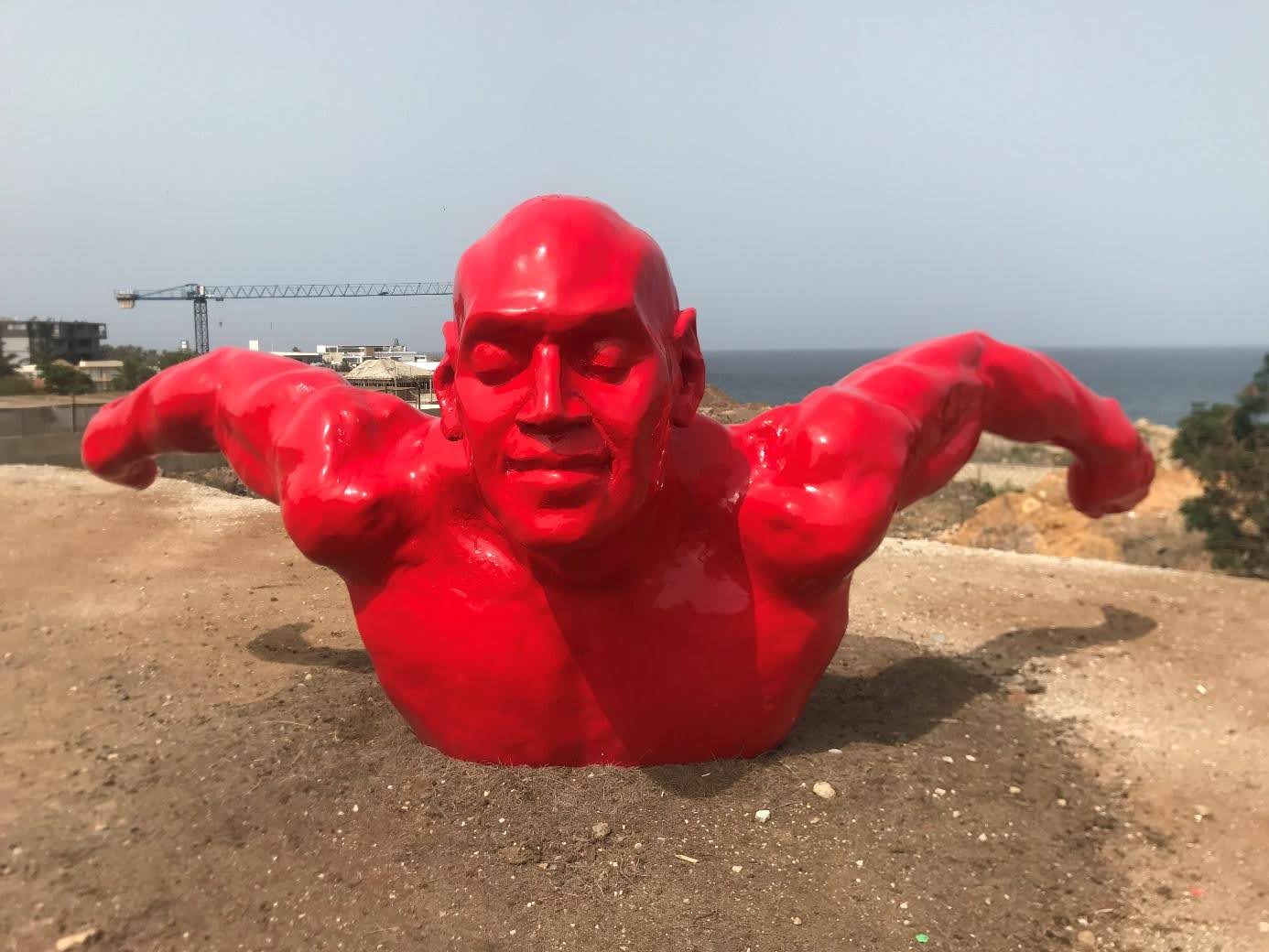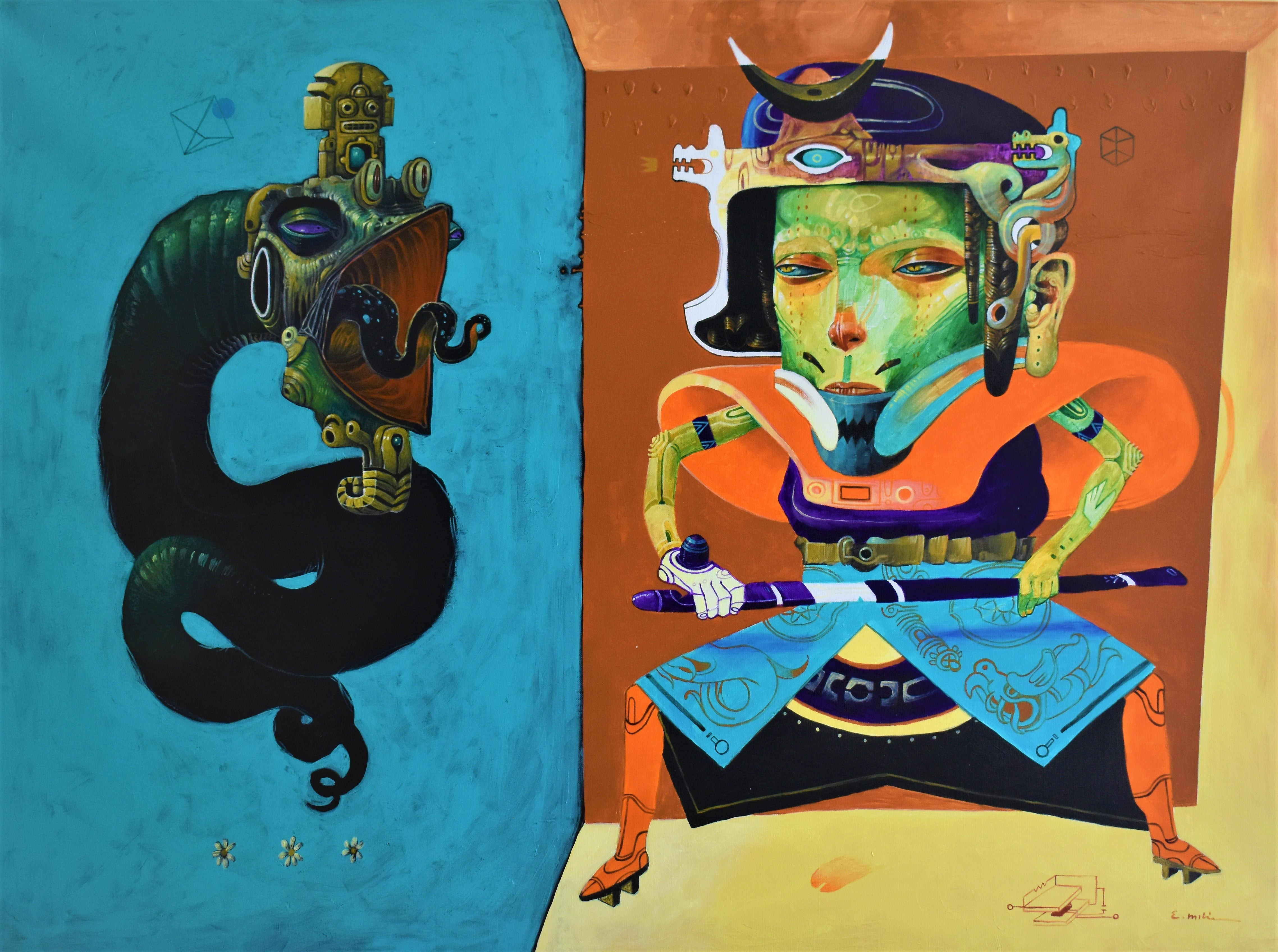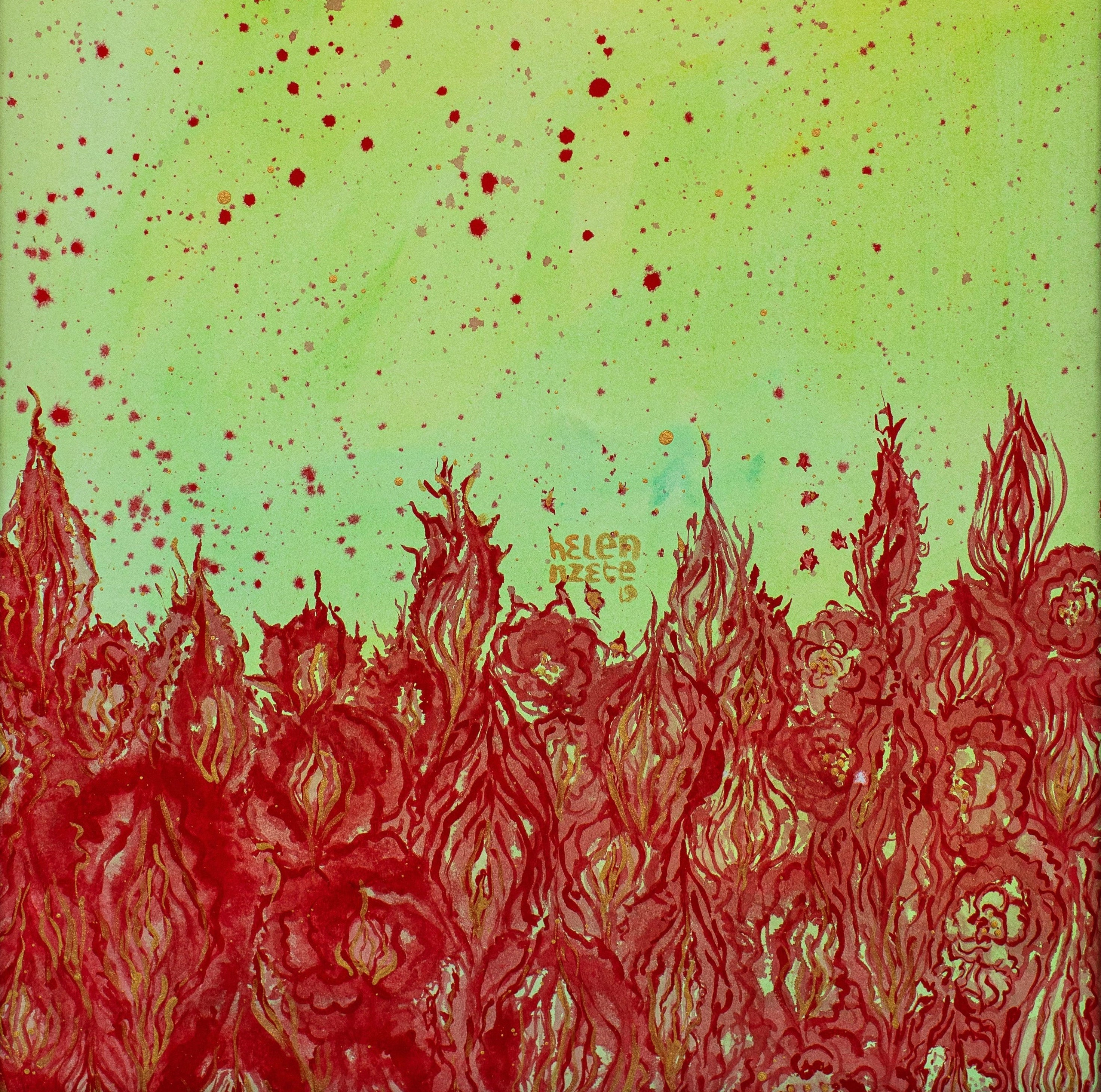
Country in Focus: Senegal
Header Image: Naaw Naan sculpture, Diadji Diop, Dakar Biennale 2022
Senegal, nestled on the western coast of Africa, boasts a vibrant and diverse cultural landscape that is deeply rooted in its art history. The country's artistic traditions reflect a harmonious blend of indigenous influences, Islamic heritage and impact of colonial history. The emergence and evolution of modern and contemporary art, along with its significant role in shaping cultural identity, establish Senegal as an essential hub for contemporary African art."
Senegal, often called the land of "Teranga," embodies a unique cultural ethos rooted in the Wolof language, spoken in Senegal, Gambia, and southern Mauritania. "Teranga," translating to "hospitality," goes beyond the conventional understanding of the term, emphasising generosity, dignity, and warmth toward all. This philosophy is deeply embedded in the Senegalese way of life and code of conduct.
With the advent of Islam in Senegal around the 11th century, a new chapter in the country's art history unfolded. Islamic art, characterised by geometric patterns and calligraphy, found its way into Senegalese architecture and decorative arts. Mosques, such as the Great Mosque of Touba, showcase the intricate tilework and craftsmanship inspired by Islamic artistic traditions.
The country's interaction with Europe began with Portuguese explorers and was later dominated by the French in the 17th century. Key regions, such as the Cap-Vert peninsula (modern-day Dakar) and Saint-Louis, became major colonial trading hubs. Notably, Gorée Island, near Dakar, was a pivotal site in the transatlantic slave trade from the 15th to the 19th centuries. Gorée Island hosts daily visits from Senegalese students learning about their history, it becomes flamboyant with art during the Dakar Biennale.
 Art on Gorée Island, Dakar Biennale 2022
Art on Gorée Island, Dakar Biennale 2022
During the colonial era, the French granted citizenship to selected residents of four specific communes: Saint-Louis, Dakar, Gorée, and Rufisque. This privilege also extended to 'Les évolués,' locals who embraced French culture, granting them various benefits, including access to education. In World War I, France heavily relied on its African and Asian colonies for resources and manpower. Among the notable forces were the "tirailleurs sénégalais" (Senegalese riflemen), a term broadly applied to Sub-Saharan African troops, including rural and educated individuals from Senegal. The "tirailleurs" demonstrated loyalty and courage in fighting for France, assuming it would lead to less colonial discrimination and oppression.
 La Place du Tirailleur (Rifleman Square) with Dakar train station (1884) mixing modern and traditional architectures.
La Place du Tirailleur (Rifleman Square) with Dakar train station (1884) mixing modern and traditional architectures.
The colonial system in many African countries, including Senegal, was complex. The French educational policy aimed to train locals to assist in administering the country under French governance. Over time, these educated Senegalese played a pivotal role in the struggle for independence. A prominent figure among them was Léopold Sédar Senghor, who became Senegal's first president.
Modern & Contemporary Art in Senegal: An Overview
Senegal's contemporary art scene owes much to its first president, Léopold Sédar Senghor, a poet and philosopher, the first African to enter l’Académie Française, the prestigious institution in France dedicated to matters pertaining to the French language. Senghor also played an essential role in shaping the nation's cultural policy. He infused it with the "Négritude" philosophy, a term first coined by Aimé Césaire, a poet and philosopher from Martinique. Under President Senghor, this philosophy became a powerful cultural and political tool for building national and cultural identity post-independence.
'Ecole de Dakar,' (1960-1980)
The first art movement in post-colonial art, it movement began at the newly established Ecole des Arts in 1960, attracting French-trained Senegalese and international artists. The school had two main sections:
Fine Arts (Art Plastiques)
Led by Iba Ndiaye, a Senegalese artist trained in Paris, known for his rigorous standards, and considered one of Senegal's most talented artists. Iba Ndiaye distanced himself from Négritude, stating, "I am a painter, I am Senegalese, but I am not a Senegalese Painter." His tenure, though brief, significantly influenced technical painting mastery among many Senegalese artists.
Workshop for Research in Black Visual Art (Atelier de Recherches Plastiques Nègres)
Headed by Ibra Tall, also trained in France, and assisted by Pierre Lods, a Belgian who founded the Poto-Poto Art School in Brazzaville. This section embraced the belief in spontaneity, allowing students to explore and create without direction.
Négritude aimed to represent its own African cosmogony – the world's view from a cosmic perspective, including the creation of the universe, various beliefs, myths, and ceremonies marking significant life events like the transition to adulthood. It used some of the following aesthetic features:
- Cardinal Colours Usage "Couleurs criardes": The predominant use of black, white, yellow, red and blue.
- Asymmetrical Parallelism Pattern: Repetitive patterns that appear similar but are intended to keep the viewer's eye engaged.
- Flat Representation: Faces and objects are depicted on a flat surface with uniform lighting, avoiding attempts to create relief.
 Asymmetrical parallel pattern design
Asymmetrical parallel pattern design
Agit'Art (1975-1980)
Another movement emerged as a counter to the established, state-funded culture. Led by artists like El Hadji Sy, trained in the 70s, it saw new performances and experiments at the 'Village des Arts,' a creative laboratory for painters, musicians, actors, and more. A flurry of events, conferences, concerts, and theatre performances characterised this period.
“Naaw (Now)” exhibition, El Hadji Sy, Dakar Biennale 2022.
Glass painting, a unique form of art originating in Senegal, traditionally called "Souwèr '' in Wolof or "Sous-verre" in French. Initially the art was used for religious purposes, blending islamic iconography with local symbols and objects. It is believed to have originated in North Africa or perhaps Persia as religious pilgrimage souvenirs.
Sét Sétal (1991) This social movement involved young, trained art students cleaning and transforming Dakar through mural paintings, statues, and sculptures. The phenomenon extended to Dakar's suburbs and other parts of the country. The impact of street painting from this movement remains visible in the city today.
Mural Paintings along Dakar's Expressway
Dakar Biennale
At the heart of Senegal's contemporary art movement is The Dakar Biennale, or Dak'Art – a prime contemporary art event held in Dakar, Senegal, and is the most significant art show in Africa and the 5th most important show globally. Originating in 1990, it shifted its focus exclusively to contemporary art in 1996. Dak'Art serves as a vital platform for showcasing African contemporary art and artists from the African diaspora, aiming to promote African art on the global stage and foster dialogue within the international art community.
Today’s artists
Senegal's contemporary art scene is vibrant and diverse, boasting a strong academic foundation. Key institutions such as L’école des Beaux-Arts are nurturing a new generation of artists. Among these notable figures is Soly Cissé, known for his abstract compositions featuring figures, possibly human, intertwined with each other, with discernible faces within the swirls of colour. This contemporary generation of artists has earned acclaim both locally and internationally, significantly influencing African contemporary art. The Dakar Biennale (Dak'Art) serves as a crucial global platform for showcasing these artists' work.
“Complicité”, Soly Cissé, acrylic on canvas.
Wave of emerging singular talented senegalese artists
 Artist KON T : “Jazz is the positive legacy of slavery”.
Artist KON T : “Jazz is the positive legacy of slavery”.
“Promenade”, Laye Thioune, acrylic on canvas.
“It's a time when nothing is completely distinguishable…and the characters who occupy the canvas are part of this unreality. Friends, enemies, quiet strollers, louts on the prowl, their features and physiognomies are indistinguishable”, about “Promenade” by Sylvain Sankalé art critic.
Layenne serie, Barada Pereira, numerical photography.
We're spotlighting Senegal for its unique art, soon to be featured on our platform. Renowned for its talented and bountiful contemporary scene, Senegal's art reflects its rich cultural heritage and addresses modern challenges. Our aim is to showcase this dynamic, contributing to global discussions on art and societal change. Senegalese artists, known for their innovative and boundary-pushing work, position Senegal as a significant voice in the contemporary art world. We're excited to present a curated collection of singular Senegalese talents, offering a glimpse into this evolving and distinctive art scene. Stay tuned for our exclusive showcase!








